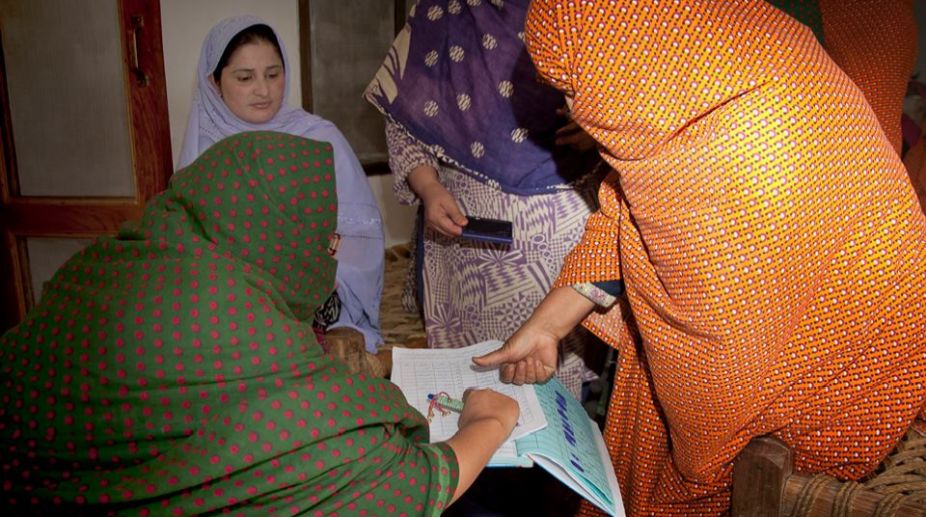PML-N Senator Ishaq Dar tipped to become Pak Foreign Minister
According to sources, Dar will be handed over the Foreign Affairs Ministry in the Cabinet of Prime Minister Shehbaz Sharif, The News reported.

(Photo: Facebook)
If the NA-120 by-election is a barometer for next year’s general elections, we should worry about female enfranchisement in Pakistan. This may seem a counterintuitive claim, given that the contest was between two women — PML-N’s Kulsoom Nawaz and PTI’s Dr Yasmin Rashid — and the media was peppered with stories about women playing a major role in vote canvassing on behalf of all parties, including the Jamaatud Dawa-linked Milli Muslim League. And of course, this by-election will be remembered as Maryam’s election, given that she was the effective face of the PML-N in lieu of her father. But here’s the big picture.
Only five out of the total 44 candidates in the byelection were women. Turnout among female voters was also low at 32.3 per cent, a decline from the 36.33 per cent turnout of women in Punjab during the 2013 general election.
Advertisement
This downward trend has been dismissed using various rationale: by-elections typically attract fewer voters; the security climate and particular tensions around this contest deterred families from voting. There are no doubt significant issues regarding female enfranchisement in terms of access, including transport and safety.
Advertisement
The Election Commission of Pakistan has taken positive steps to promote female voter turnout over recent years. In June 2015, it declared void the results of a by-election in Dir in which women were prohibited from voting.
The ECP has also constituted voters education committees in nine districts of Punjab where female participation in the last general elections was low, with an eye to increasing awareness among women of the importance of their vote.
Electoral reforms that require parties to give 5 per cent of their tickets to female candidates and mandate a minimum of 10 per cent women voter turnout will also help promote female participation. But the NA-120 by-election has reiterated how the role of women in politics remains underdeveloped.
Even at their winning best, female representatives are proxies for their fathers, brothers, or party leaders, the attractive face of a political dynasty or tribe. As such, the increased involvement of women candidates is itself unlikely to boost female enfranchisement — it is facile to think that women will vote just because they can cast their vote for another woman.
Indeed, that is often not the expectation. Political parties primarily view female voters as extra numbers that will reliably vote along familial, tribal, ethnic or linguistic lines, as commanded by the men in their lives. When political parties do seek to woo women voters as independent entities, they mistakenly view them through the gender lens, to the detriment not only of political parties’ fortunes, but also society at large.
The PPP has long championed women’s rights through legislative interventions while re–minding voters that it is Benazir Bhutto’s party. The PML-N’s sudden interest in feminist legislation such as the anti-honour killing and anti-rape bills passed last year was seen as a reflection of Maryam’s growing role in the party and her interest in attracting more female votes. But these feminist policies are more effective as a demonstration of a party’s progressive agenda. They help garner the support of educated urban elites and project a good liberal face for the international community but do not necessarily mobilise the female vote bank.
Truth is the Pakistani female voter does not yet exist because she is still to be created by political parties. Political parties have yet to develop electoral platforms that would motivate women to vote. These campaigns, when they are introduced, will have to go beyond lip service to women’s rights, which may be alien concepts to many female voters, or dismissed as rhetoric by women who know that enforcement is the true challenge.
Research across the developing world has shown that when women are in charge of household expenditure, they prioritise spending on education, nutritious food and infrastructure that benefits communities such as sanitation. One can extrapolate from this that women will come out to vote when parties’ campaigns address the issues of primary concern to them: education, safety, resource availability, healthcare.
In an increasingly urbanising Pakistan, in which more women are joining the workforce, issues that mobilise female voters in the West such as the availability of safe public transport and childcare provision will also drive female political participation.
As the majority of middle-class consumers, women will also be motivated by issues such as inflation and consumer protection. Our political parties remain obsessed with fighting elections on the basis of personality cults, identity politics and mega themes such as corruption or sovereignty.
The NA-120 poll has shown that political races, particularly in urban contexts, will be increasingly competitive and political parties will ignore women at their peril. But to cater for female voters, campaign promises will have to focus on service delivery — and this can only be to Pakistan’s benefit.
(Dawn/ANN)
Advertisement